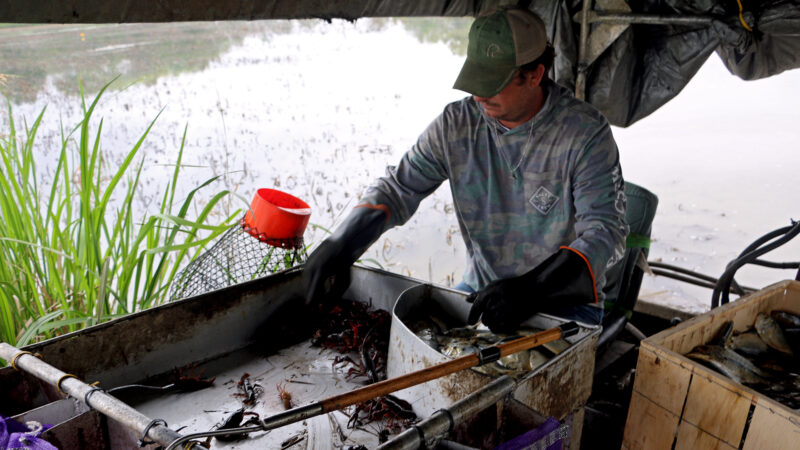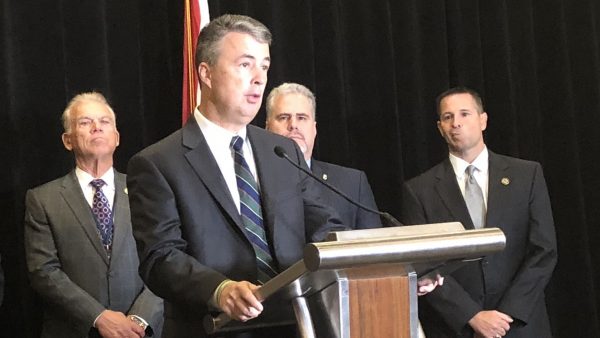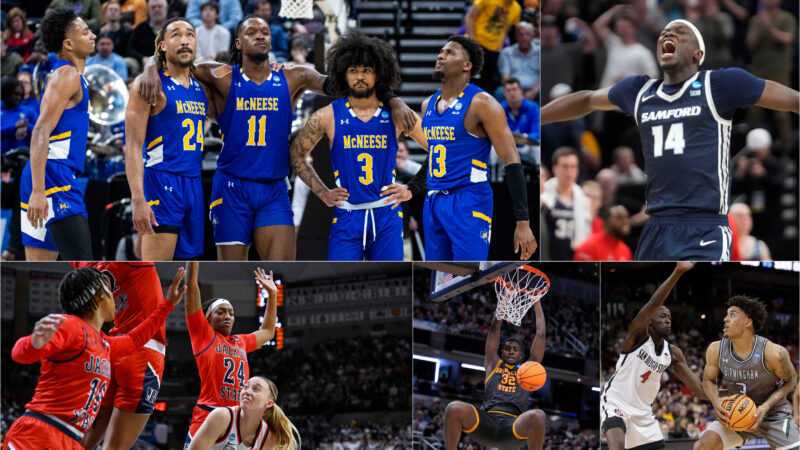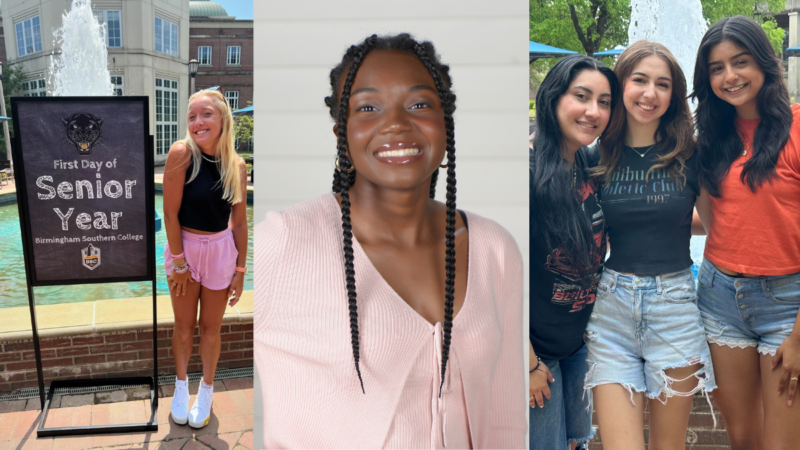Javacia Harris Bowser: The “Hip Hop Genius” In The Classroom
It’s that time of year — students are headed back to the classroom for their fall semesters and teachers are getting ready to implement their lesson plans in the hopes of inspiring a new group of young minds. And while there are guidelines and rules teachers must follow when creating their curriculum, some teachers are look for ways to think outside the box to connect with their students. Our guest blogger Javacia Harris Bowser writes about this in her monthly post for WBHM. As an educator herself, she has some insights and inspiration for teachers.
I want to be a hip-hop genius.
No, I don’t mean that I want to release an album and tour the world performing alongside Jay-Z. What I mean is that as a teacher at the Alabama School of Fine Arts, I want to be an educator who embraces the kind of assertive creativity exhibited by hip-hop’s pioneers.
Sam Seidel is the cause of my hip-hop dreams.
Seidel, the author of the book Hip Hop Genius: Remixing High School Education, defines hip-hop genius as “creative resourcefulness in the face of limited resources” or, as it’s described in the hip-hop community, “flipping something outta nothing.”
When Seidel was 20 years old he started teaching at a juvenile prison. While there were many things that separated Seidel and his students, he quickly discovered that they all shared a love for hip-hop. And this music became the cornerstone of his classes. As a result, previously disengaged students became interested in their education and emerged as leaders. Through the elements of hip-hop, Seidel’s students not only learned language arts, but also life skills and even self-love.
After seeing the difference hip-hop music made with his students, Seidel started to wonder what else educators could learn from the innovation and influence of the genre.
To be clear, when Seidel talks about hip-hop he’s not just talking about music, graffiti and dance — which are considered hip-hop’s essential elements. Instead, Seidel is referring to the essence of hip-hop; he’s talking about the blend of instincts, confidence, and ingenuity that develop in oppressed communities.
Just as hip-hop producers sampled songs from other genres to create unique and new sounds for listeners, Seidel calls for teachers to borrow from diverse education models to create a blend of practices that meet their students’ needs.
I was introduced to Seidel’s ideas by my colleague Bree Latner, who teaches science at ASFA. Latner stumbled upon Sidel’s book earlier this year and his concepts resonated with her immediately.
“I’m just frustrated with the current education system,” said Latner, who taught at Vestavia Hills High School before joining the ASFA faculty. “I’m frustrated with the need to put kids in a box and to only have one right answer.”
Latner said she learned first hand the value of thinking outside the box when she taught science at a summer camp that serves kids from underserved populations. She was able to connect with a disengaged student during a science experiment that was producing a slapping sound. The student asked Latner if she could record the noise, and the next day the student presented Latner with a hip-hop beat from the recordings.
Some may not see this as a victory, but Latner certainly did.
“She got it,” Latner said of the student. “She had discovered that what she was experiencing in class could inspire her to do other things. She was taking it and making it into something wholly different.” To Latner, she was being a hip-hop genius.
As teachers, we must make the material we cover more relevant to our students’ lives. I’m fortunate. At Alabama School of Fine Arts, where I teach, most of our students are very driven. But this doesn’t let me off the hook to try to do better. And for the teacher of the disengaged student, the rewards of being a hip-hop genius in the classroom can be even richer.
In all the classes that I teach — from my 8th grade world literature class and my 10th grade early American literature classes to my elective that’s a blend of journalism and women’s studies — I stress the importance of writing and being able to communicate well. I don’t plan to ever change that. But these lessons must go beyond grammar rules and instructions on composing the perfect five-paragraph essay.
So as we examine poet and writer Sherman Alexie’s brilliant use of satire and stereotypes, I’ll urge them to use their voices to challenge stereotypes too.
I’ll encourage my students not only to read and analyze the stories of others, but I will empower them to share stories of their own. “Write or be written” will be my rally cry. “Write or be erased” will be my refrain. Tell your story or someone might tell it for you and they’ll probably get it wrong. Tell your story because there’s a good chance no one else will.
Together, my students and I will become hip hop geniuses and blogging will be our graffiti art. Just as the graffiti artist didn’t need a gallery to show his work but displayed it for thousands by spraying it on train cars, the blogger doesn’t need a publishing company or mainstream media to share her words with the world.
Just as in the early years of hip-hop, kids danced on discarded linoleum flooring and created new moves like the windmill and the head spin, we teachers must find new platforms, too, Seidel has said. We must discover new moves. Perhaps I will find mine in social media and I will show my students that it can be used for much more than posting selfies, but can be a powerful tool to spark social change.
I won’t just talk about the importance of the oral tradition in early Native American culture, but I’ll show them that the ability to speak well is important to our culture today. I’ll show them TED talks to prove it and then challenge them to write and present a talk, too. But I’ll stress also that these skills can help them with everything from a job interview to an argument with their best friend.
I will teach my students public speaking skills so they will have the charisma of Jay-Z and but I want them to have his business savvy too. I will teach my students to have an entrepreneurial spirit and to be ready to hustle whenever necessary.
Yes, I do believe that education is the key to success, but I can’t ignore the fact that college degrees didn’t keep my highly educated friends from being laid off from their jobs when the economy tanked.
Education must be more than the pursuit of diplomas and degrees. It must be about teaching kids how to “flip something outta nothing” because one day they may have to do exactly that.
Javacia Harris Bowser is an educator and freelance writer in Birmingham. Javacia is the founder of See Jane Write, an organization for local women writers, and she blogs about her life as a “southern fried feminist” at The Writeous Babe Project.
Alabama mine cited for federal safety violations since home explosion led to grandfather’s death, grandson’s injuries
Following a home explosion that killed one and critically injured another, residents want to know more about the mine under their community. So far, their questions have largely gone unanswered.
Crawfish prices are finally dropping, but farmers and fishers are still struggling
Last year’s devastating drought in Louisiana killed off large crops of crawfish, leading to a tough season for farmers, fishers and seafood lovers.
Lawmakers consider medical cannabis revamp
It’s been three years since Alabama lawmakers passed legislation establishing a system to govern medical cannabis in the state, yet not one prescription for the drug has been filled. The rollout has been delayed by lawsuits and conflict over the licensing process.
Man arrested in connection with device that exploded outside Alabama attorney general’s office
Kyle Benjamin Douglas Calvert, 26, of Irondale, Alabama, was arrested Wednesday on charges of malicious use of an explosive and possession of an unregistered destructive device, the U.S. attorney’s office said.
For some Gulf South schools, a March Madness loss can still be a win off the court
Making it into the NCAA Tournament can translate to boosts in student enrollment, athletic involvement, merchandise sales and more for participating schools.
‘A bad day to be a panther’: Students react to BSC’s closure
Birmingham-Southern College students learned about their school's closure while on Spring Break. When they returned to campus, their emotions ranged from frustrated to angry to sad.







